Being a plant lover is one thing, but our plants will never be able to replace our precious fur babies. Unfortunately, many plants are considered toxic to our pets, and it is important to be aware of these. First things first, I did not exclude dogs from this article because I wish for them to be poisoned at all. Even though I am more of a cat person, I still adore dogs. The reason for the separate article specifically on cats is because:
1. Plants that are toxic to cats might differ from those that are toxic to dogs.
2. Some cats are much more inclined to eat plants than dogs are. Cats are genetically predispositioned to eat plants and grass. It’s as simple as that.
Disclaimer: I am not a veterinarian, and the advice of your pet’s healthcare provider should always be considered primarily.
Also, note that I will only be covering the most popular houseplants that are toxic to cats. If the plant in question is not on your list, a quick google search should suffice, and if you don’t mind, quickly come back to this article and pop the name of that plant in the comments below.
Why Do Cats Eat Plants?
There are several speculations as to why cats eat plants and grass. The first is that cats have a dietary deficiency which they can maintain when eating grass and plants that include folic acid and vitamins A, B, and D. The other speculation is that cats inherited the need from their wild ancestors to cleanse their intestines from worms, even though most domestic cats are (hopefully) dewormed regularly.
Plants That ARE Toxic to Pets
-
English Ivy
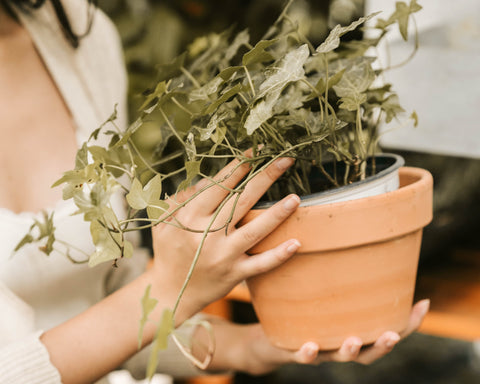
Although mostly grown outside, some plant lovers (myself included) really like the look of it and display it inside. In my case, I hung my basket of English Ivy over the shower head, far from where the cats can reach.
Toxic Component: Triterpenoid saponins
2. Peace Lily
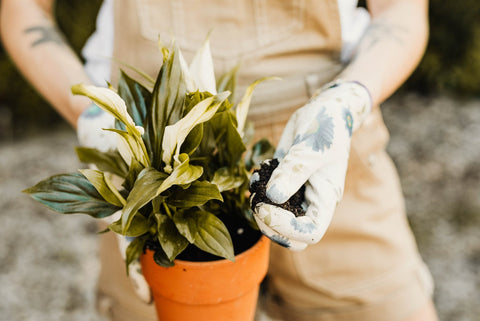
Don’t let the name fool you. The peace lily wants violence, not peace when it comes to our little furry friends. Luckily for me, I tend to struggle to keep them alive anyways, so there is no peace for me in my home it seems.
Toxic Components: Insoluble Calcium Oxalates
3. Pothos
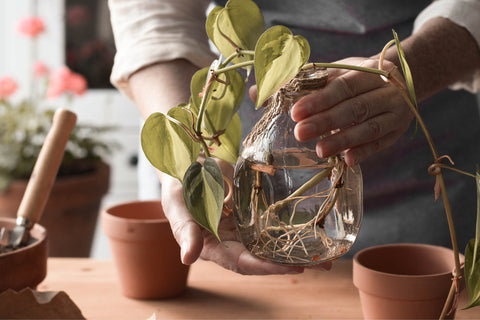
Pothos: the staple in every plant enthusiast’s collection, which makes it a particularly important one to mention. I can tell you from personal experience that these plants are indeed toxic to cats, as I was the lucky winner who got to clean cat vomit from the floor that day. Don’t think the cats learn their lesson though - they keep coming back from more.
Toxic Components: Insoluble calcium oxalates
4. Dieffenbachia
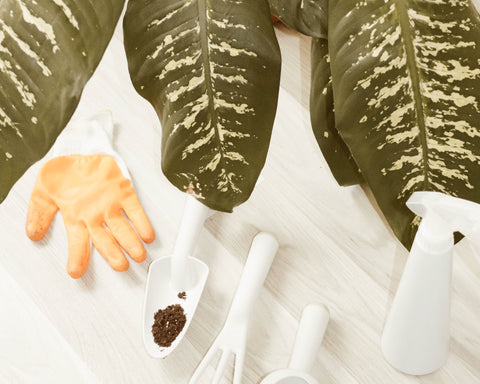
Dieffenbachia is a very common houseplant, and because of its size and structure, it isn’t really a suitable plant for hanging from the ceiling, so unfortunately this plant is a no-go for cat owners.
Toxic Component: Insoluble calcium oxalates, proteolytic enzyme
5. Swiss Cheese Monstera
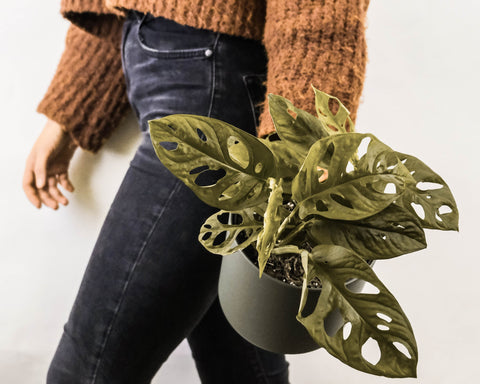
The Swiss cheese monstera is a particularly aesthetically pleasing house plant that has become very popular recently. Luckily, this is a climbing plant that can be draped high up, away from where your cats can reach.
Toxic Component: calcium oxalate crystals
6. Aloe Vera

Aloe vera is equally as toxic to cats as it is beneficial to humans. Aside from the toxicity, the leaves of the aloe vera plant also have little spikes, that can physically hurt your cats if they try to chew on it, or rub themselves against it.
Toxic Components: Saponins, anthraquinones
7. Snake Plant
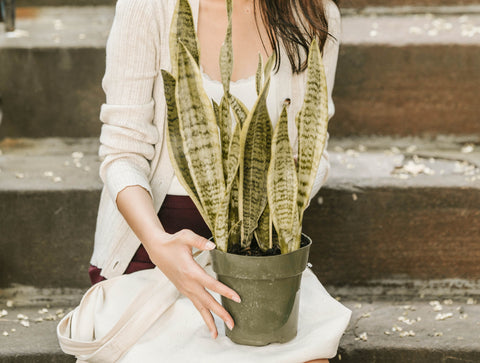
Being one of the easiest to care for plants with its thriving-in-darkness and not-so-thirsty properties, the snake plant is a staple in most households. In my experience, cats tend to ignore the snake plant, but rather be safe than sorry and avoid it, as it has a single toxic component.
Toxic Component: Saponins
8. Monstera Deliciosa
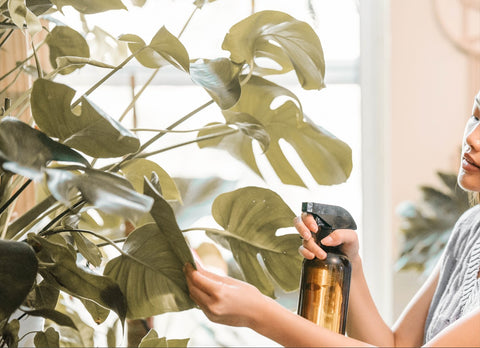
This one is a tough pill to swallow, because monstera’s are one of the most beautiful tropical plants that are very popular to keep as indoor plants. I have a monstera that I keep on a shelf unit that my cats can’t get up on.
Toxic Component: Insoluble calcium oxalates
What To Do If You Already Own a Toxic Plant
You may have gone through the above list and realized that some of your plants are toxic to your cat(s). As disappointing as this may be, try to see it as an opportunity to either get creative, get into the spirit of giving, or make money from it, through one of the following ways:
- If the plant is small enough, place it somewhere your cat can’t reach, like an exceedingly high shelf.
- Gift the plant to a friend who doesn’t own any pets. Shame.
- If you aren't in a very giving mood, consider listing your plant on online platforms like Facebook marketplace. Plants are an expensive commodity these days, and you might get some great pocket money if you are willing to part from it.
Tips For Keeping Your Plants Out of Reach from Your Pets
There are many solutions that can be considered when it comes to keeping a toxic plant out of reach of your cats. This being said, it is important to keep in mind that different cats have different personalities and physical abilities. For example, one of my cats will rarely, if ever, jump onto the countertops, yet the other one loves being at eye level with us. You know where your cat will be able to reach, so place your plants accordingly.
1. Hanging Planters

Hanging planters are one of my favorite ways to display my plants while keeping them out of reach for my cats. If you don’t have the option or energy to drill holes in your ceiling or walls to accommodate hanging planters, there are many ways you could still make use of them, it just takes a little imagination. You can hook your planters over your curtain rails, and towel hooks, and even make use of a mobile clothes hanger solely for the display of your plants.
2. Shelves

If you don’t mind drilling a few holes, then shelves are a great option to display your plants vertically. Staying on the topic of cats and toxic plants: ensure that the shelves are entirely filled, or not wide enough for your cats to be able to jump onto.
3. Lemon Infused Plant Spray
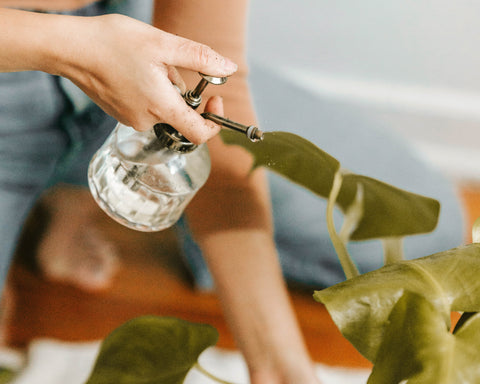
Cats hate the smell and taste of citrus. Being an avid citrus lover, I have noticed that my younger, curious cat likes to smell my lemon juice, and he immediately regrets it every time, crinkling his nose in disgust. Mixing lemon juice with water and regularly spritzing your plants with the solution might just keep your cats away from your greenery. If you have tried and tested this trick, please report back in the comment section, and let me know if it worked!
Thanks for reading! I hope you now have a clearer understanding of what plants are toxic when ingested by cats. Below are a few more frequently asked questions and answers regarding toxic plants. If you have anything to add, or even if you disagree with the information given, be sure to let me know your thoughts in the comments below.
Frequently Asked Questions
What To Do If Your Cat Ate a Toxic Plant?
So, you skimmed through the above list and realized that the plant your cat just used as a chew toy is, in fact, toxic? It is always best to immediately phone your veterinarian and give them as much information as possible regarding the following:
- What plant did your cat eat?
- How much of the plant did your cat eat?
- Did your cat vomit after eating the plant?
- Is your cat displaying any other strange behaviors?
As previously mentioned, I am not a vet, nor do I have any medical training whatsoever. However, I usually don’t realize that one of my cats got a hold of a plant that may be toxic to them until I hear the frightening sound of one of them vomiting (nothing gets you on your feet faster than a hurling cat). It is only during inspection of the discharge while trying to keep myself from vomiting, that I usually find a leaf and realize that they must have chewed on one of my plants. After emitting the foreign, sometimes toxic, leaf from their stomach, they are usually fine.
Are Succulents Safe for Cats?
Yes, most succulents are harmless to animals. Ironically, cats tend to stay away from succulents, even though they are completely harmless. If only they applied this same caution to plants that are actually toxic when ingested.
Do Cats Know Not to Eat Poisonous Plants?
Plant poisoning in cats is very uncommon, mostly because they tend to be very meticulous about what they eat and will stray clear from foreign-looking consumables. Kittens and housecats, however, tend to be more curious and will sometimes have a go at a plant, so it is best to avoid toxic plants when you are a cat parent.





